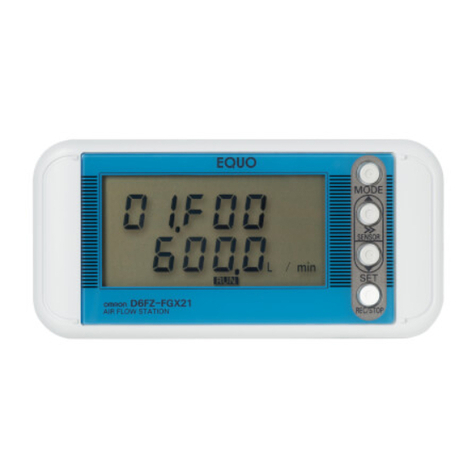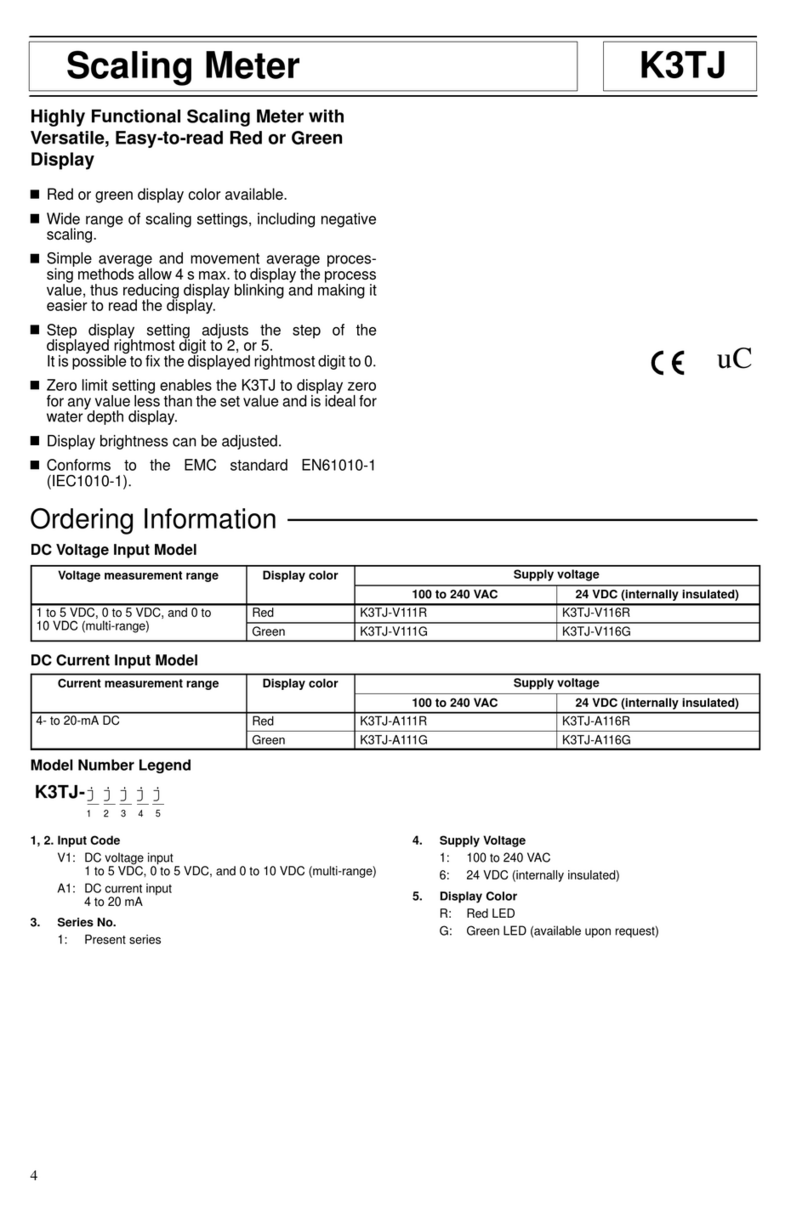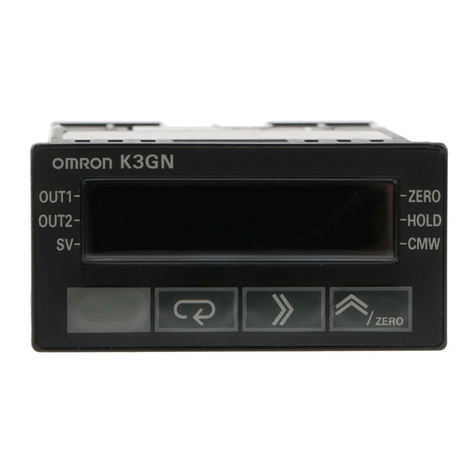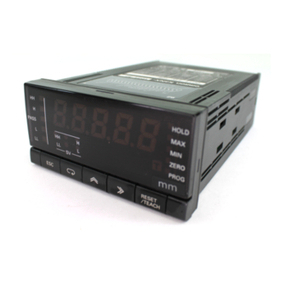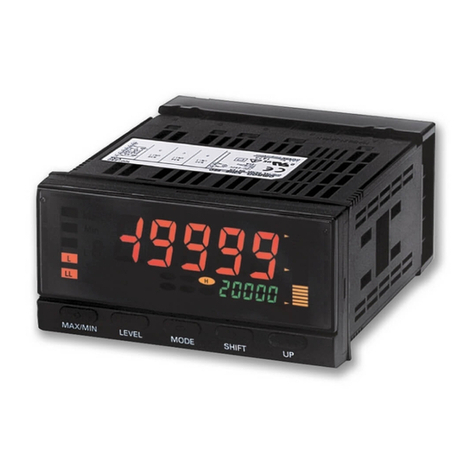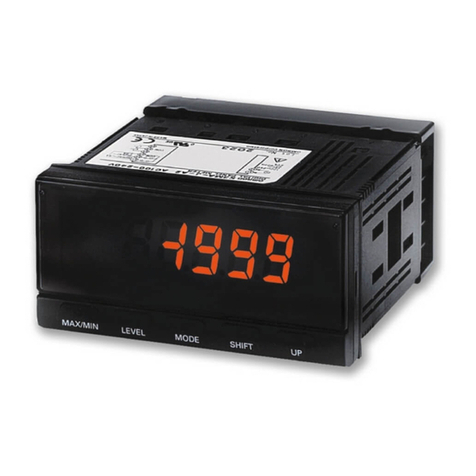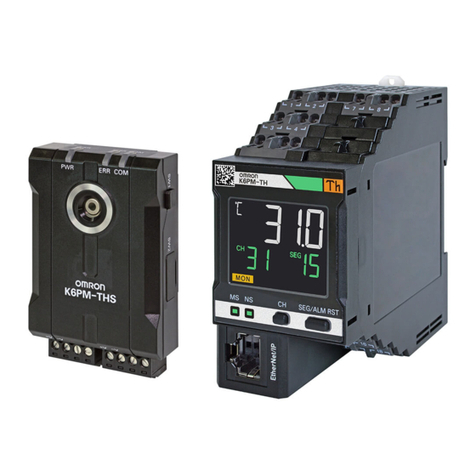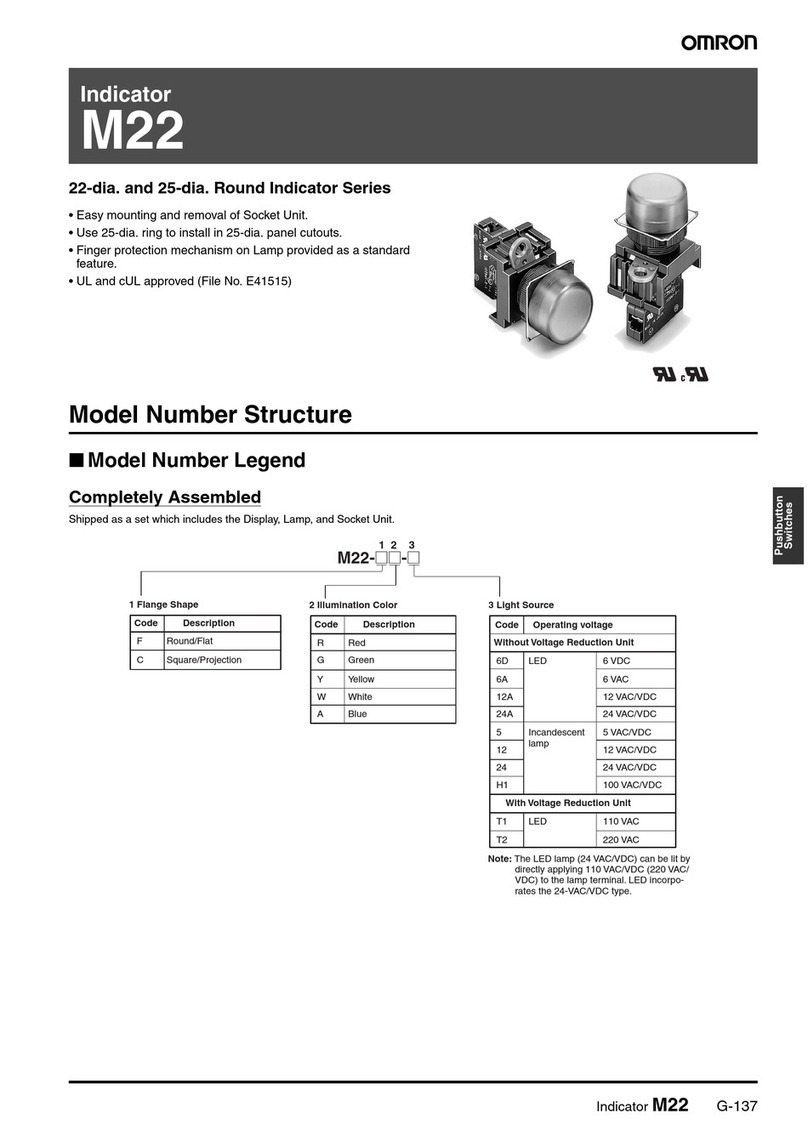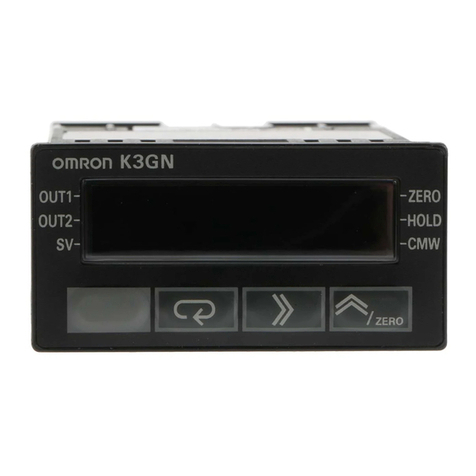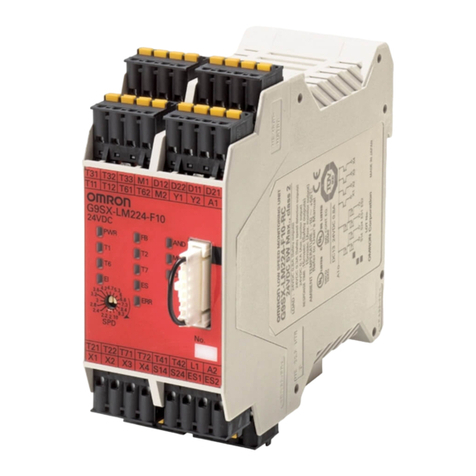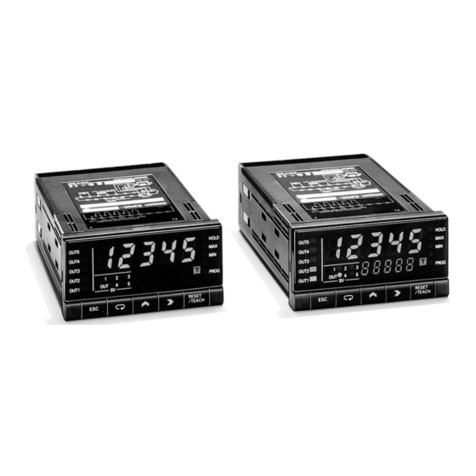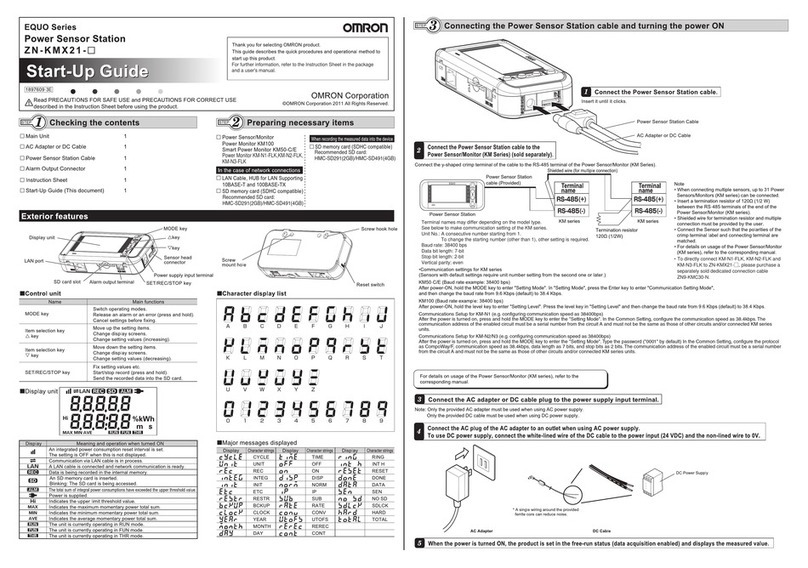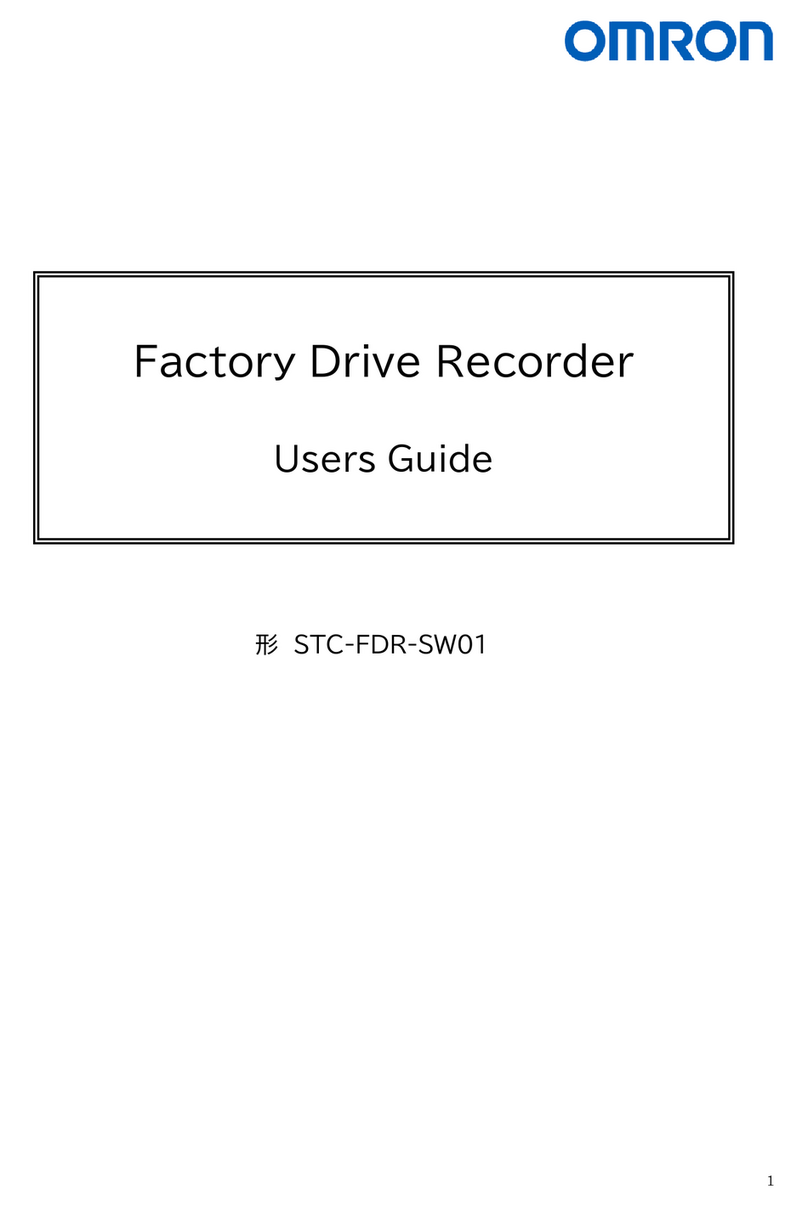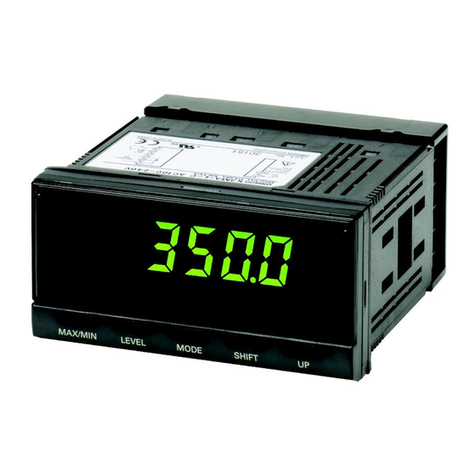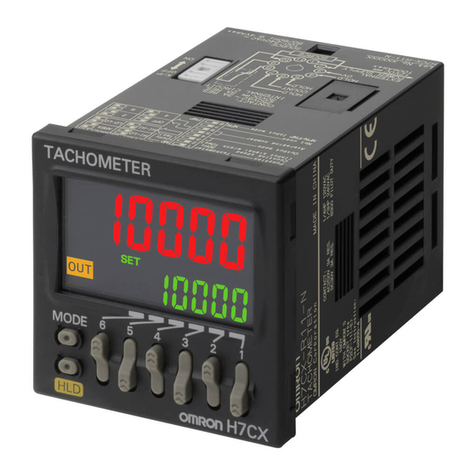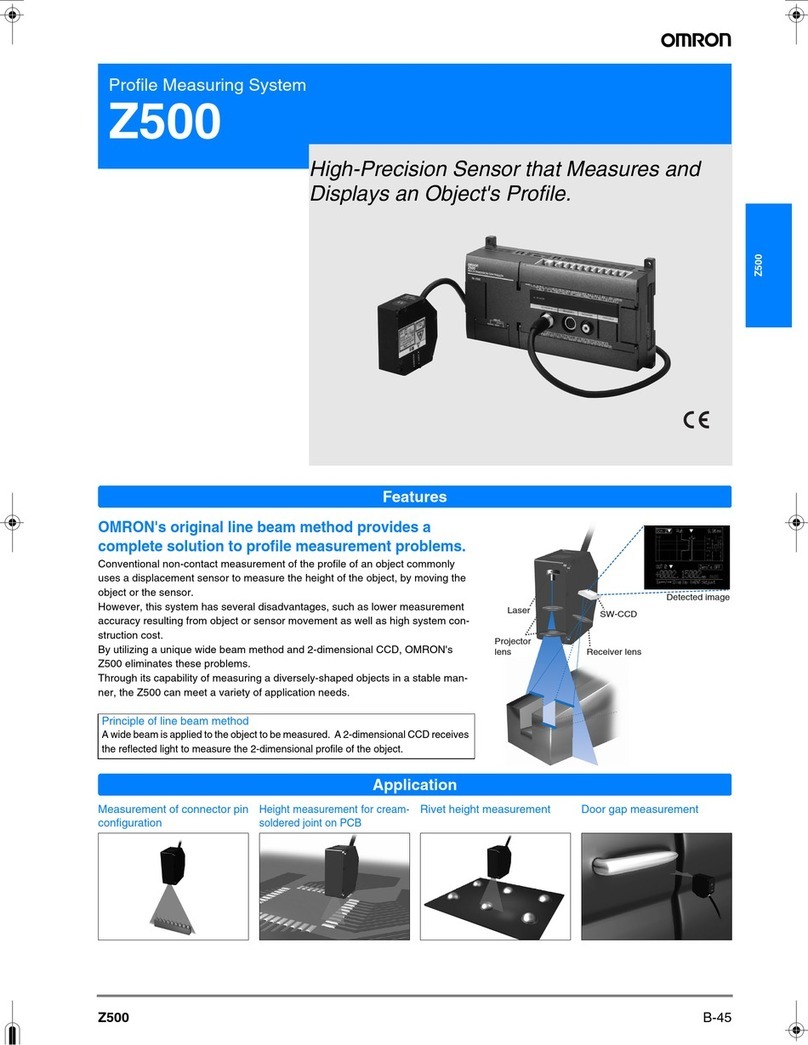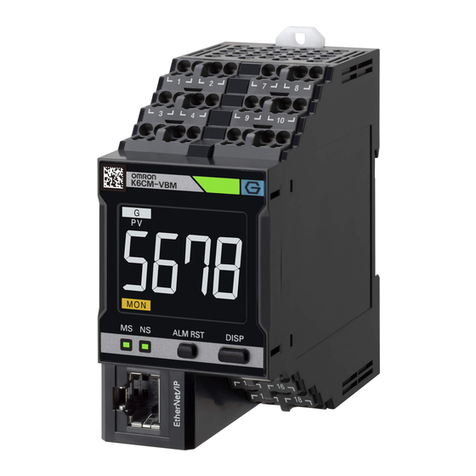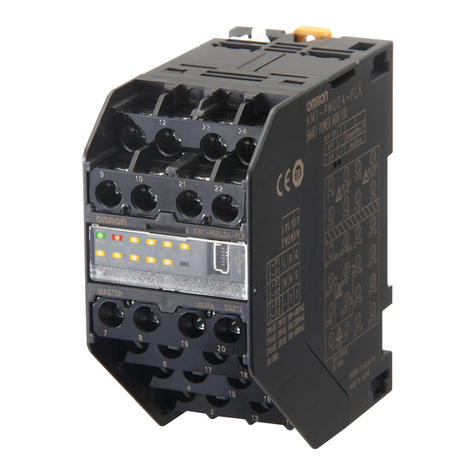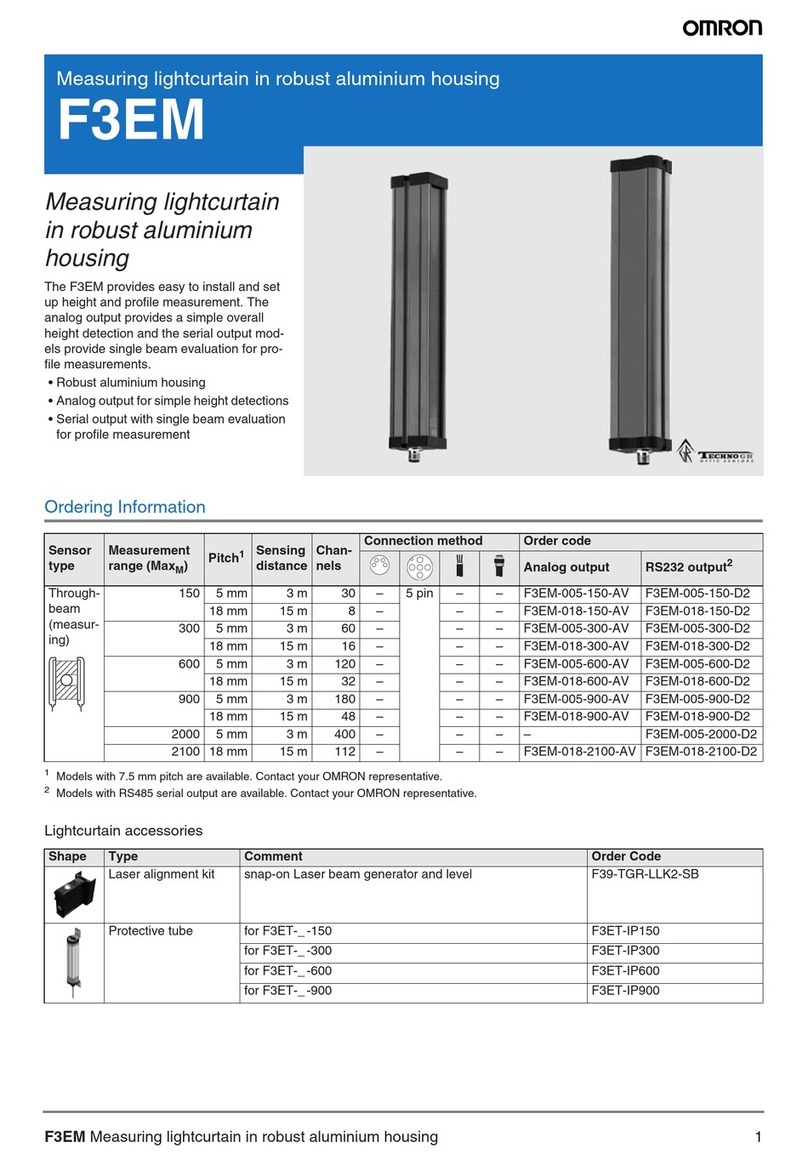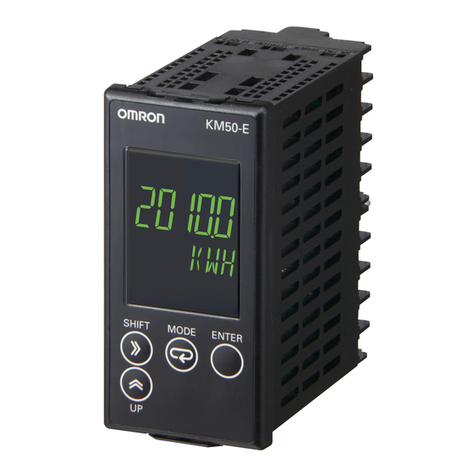
K3GN
K3GN
2
3MODEL NUMBER LEGEND
K3GN - - 24 VDC
12 3
1. Input Type
ND: DC voltage/current, NPN
PD: DC voltage/current, PNP
2. Output Type
C: 2 relay contact outputs (SPST-NO)
T1: 3 transistor outputs (NPN open collector)
T2: 3 transistor outputs (PNP open collector)
3. Communications Output Type
None: Communications not supported
FLK: RS-485
Specifications
3RATINGS
Supply voltage 24 VDC
Operating voltage range 85% to 110% of the rated supply voltage
Power consumption (See Note) 2.5 W max. (at max. DC load with all indicators lit)
Insulation resistance 20 MΩmin. at 500 VDC between external terminal and case.
Insulation provided between inputs, outputs, and power supply.
Dielectric withstand voltage 1,000 VAC for 1 min between external terminal and case.
Insulation provided between inputs, outputs, and power supply.
Noise immunity ±480 V on power supply terminals in normal mode, ±1,500 V in common mode,
±1µs, or 100 ns for square-wave noise with 1 ns
Vibration resistance Malfunction 10 to 55 Hz, 10 min each in X, Y, and Z directions; acceleration: 9.8 m/s2
Destruction 10 to 55 Hz, 30 min each in X, Y, and Z directions; acceleration: 19.6 m/s2
Shock resistance Malfunction Models with transistor outputs: 196 m/s2for 3 times each in X, Y, and Z directions
Models with relay contact outputs: 98 m/s2for 3 times each in X, Y, and Z directions
Destruction 294 m/s2for 3 times each in X, Y, and Z directions
Ambient temperature Operating -- 1 0°Cto55
°C(14
°F to 131°F) with no condensation or icing
Storage -- 2 5°Cto65
°C(--13
°F to 149°F) with no condensation or icing
Ambient humidity Operating 25% to 85% with no condensation
Ambient atmosphere Must be free of corrosive gas
EMC Emission Enclosure EN55011 Group 1 class A
Emission AC Mains EN55011 Group 1 class A
Immunity ESD EN61000-4-2: 4-kV contact discharge (level 2)
8-kV air discharge (level 3)
Immunity-RF-interference ENV50140: 10 V/m (amplitude modulated, 80 MHz to 1 GHz) (level 3)
10 V/m (pulse modulated, 900 MHz)
Immunity Conducted Disturbance ENV50141: 10 V (0.15 to 80 MHz) (level 3)
Immunity Burst EN61000-4-4: 2-kV power-line (level 3)
2-kV I/O signal-line (level 4)
Approved standards UL Listed, File No. E41515 to UL508 standard
CSA Certified, File No. LR67027 to CSA22.2 No. 142--M1987 standard
Conforms to EN50081-2, EN50082-2, EN61010-1 (IEC1010-1); conforms to
VDE106/part 100 (finger protection) when the terminal cover is mounted.
Weight Approx. 100 g
Note: A control power supply capacity greater than the rated capacity is required when the Digital Panel Meter is turned ON. Do not for-
get to take this into consideration when using several Digital Panel Meters. When power is supplied, all indicators will light and
outputs will be OFF. When using startup compensation time operation, the display will read “ööööö” and all outputs will be OFF.
